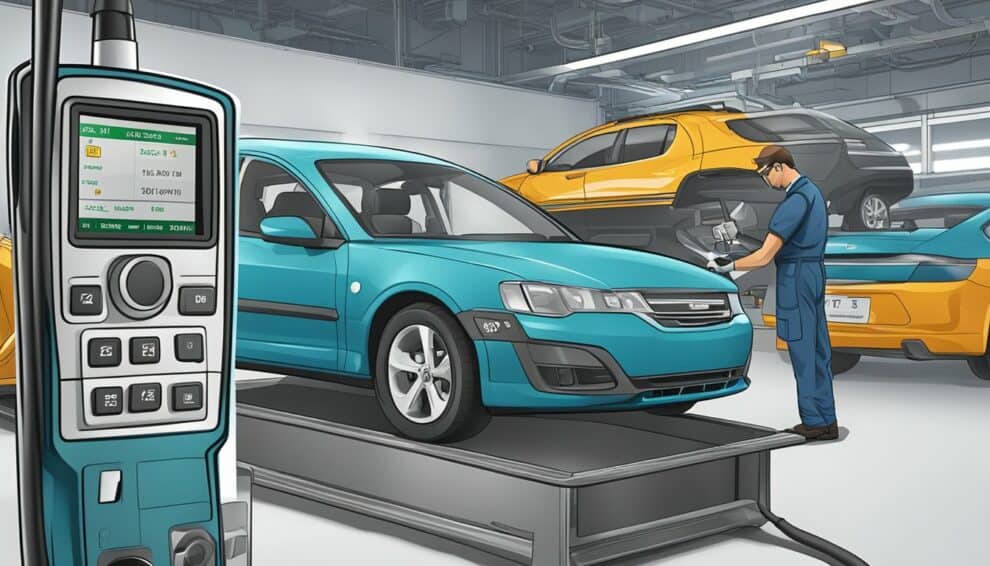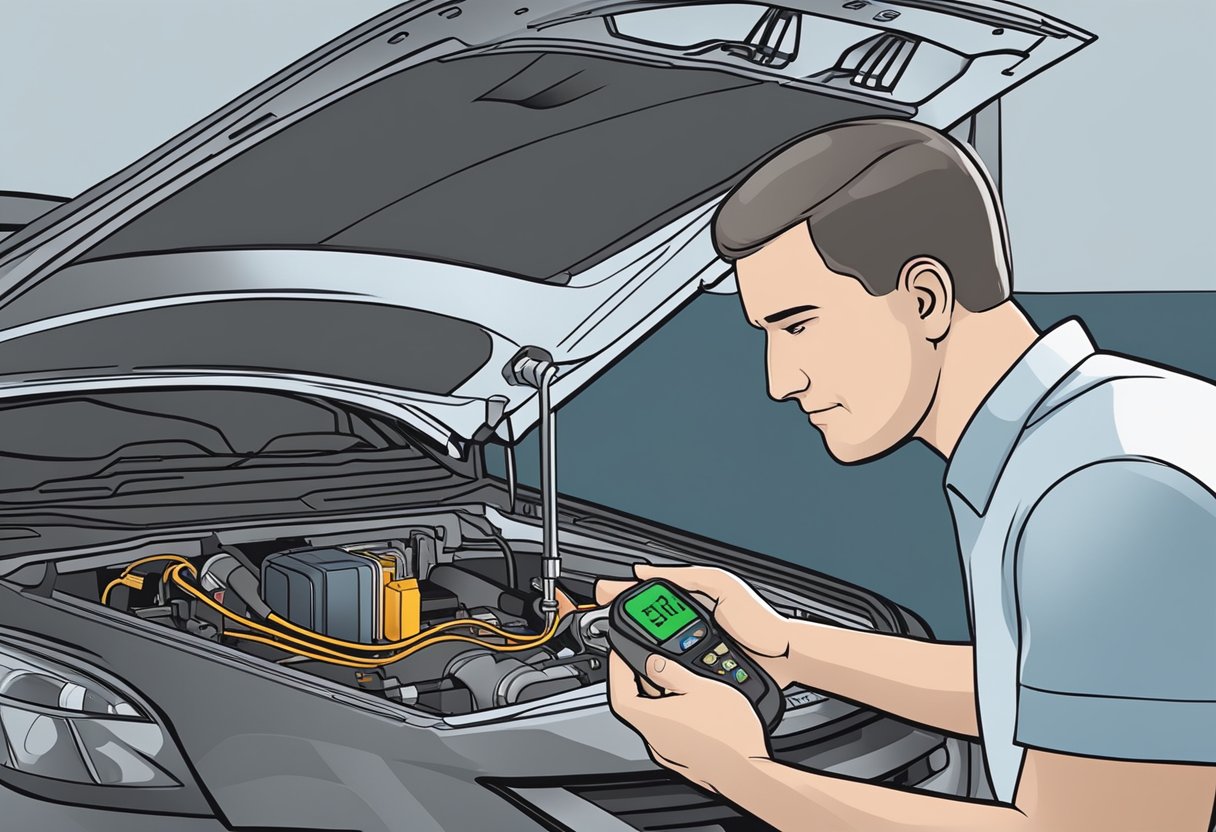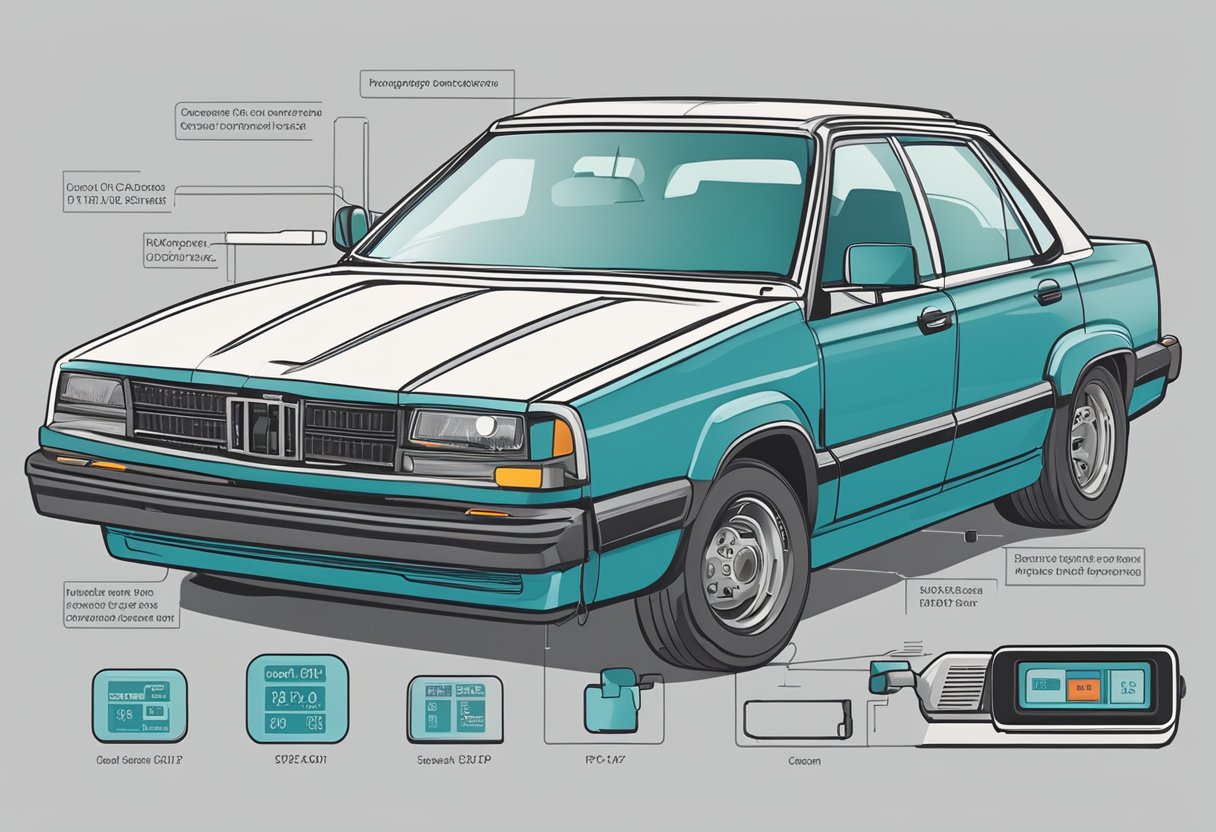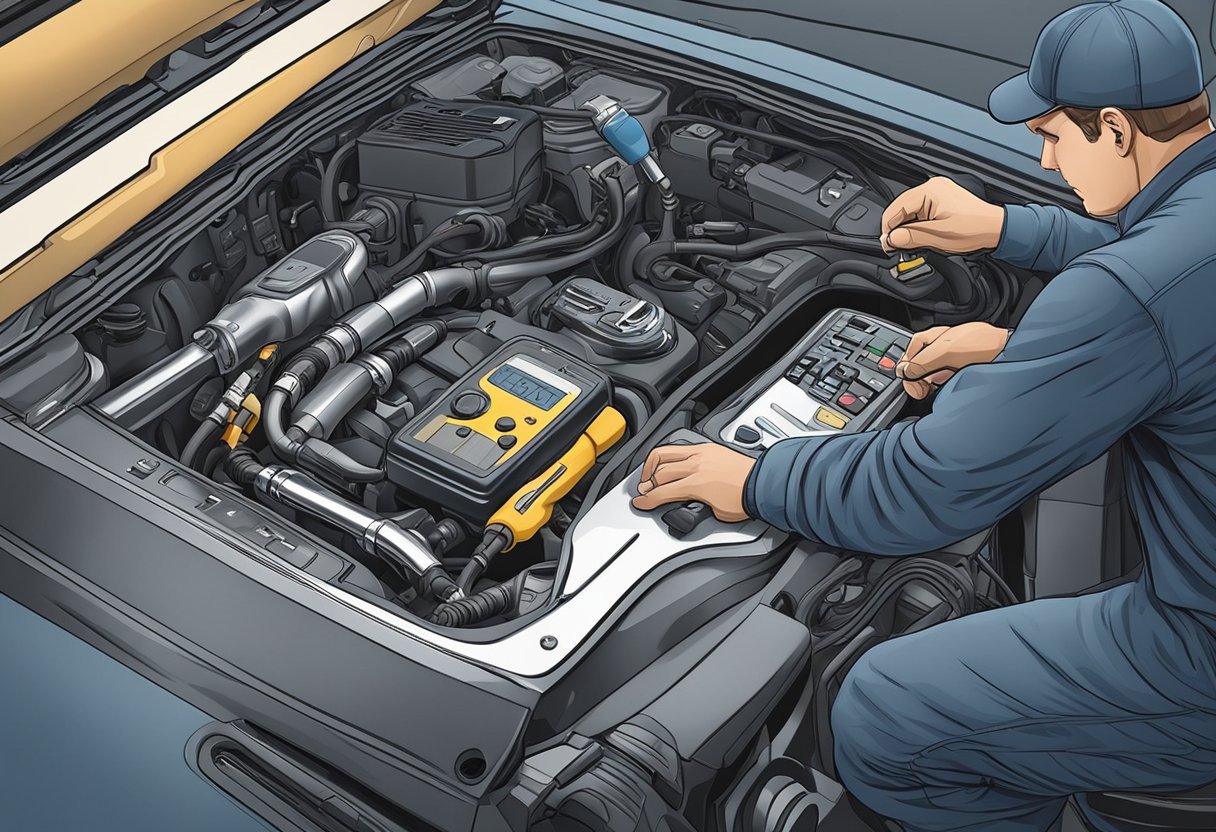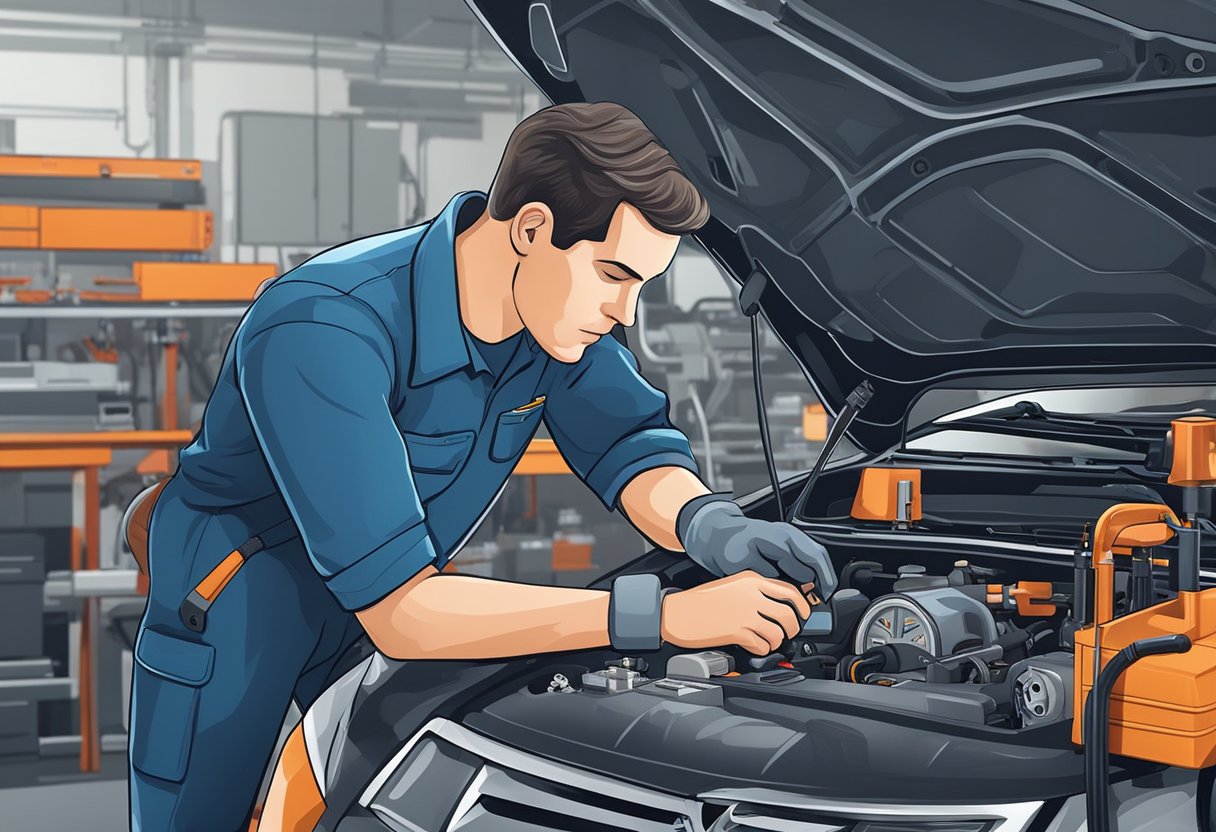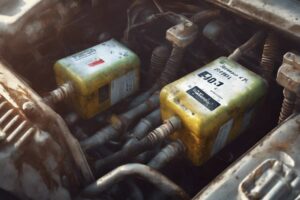If you are experiencing a P0452 code on your vehicle, it means there is an issue with the EVAP system pressure sensor.
The EVAP system is responsible for capturing and storing fuel vapors that would otherwise be released into the atmosphere.
The pressure sensor is a critical component of this system, as it monitors the pressure levels to ensure everything is functioning properly.
When the pressure sensor detects a low input, it triggers the P0452 code and illuminates the check engine light.
This can be caused by a variety of factors, including a faulty sensor, damaged wiring, or a leak in the EVAP system.
It is important to address this issue promptly, as a malfunctioning EVAP system can lead to decreased fuel efficiency and increased emissions.
Fortunately, fixing the P0452 code is typically straightforward.
Depending on the root cause, it may involve replacing the pressure sensor, repairing damaged wiring, or fixing a leak in the EVAP system.
With the right tools and knowledge, you can address this issue and get your vehicle running smoothly once again.
Understanding P0452 Code
If you are experiencing issues with your vehicle’s EVAP system, you may see a P0452 code appear on your OBD-II scanner.
This code indicates that there is a low input signal coming from the EVAP system pressure sensor.
The EVAP system is responsible for capturing and storing fuel vapors that would otherwise be released into the atmosphere.
The pressure sensor is a critical component of this system, as it measures the pressure inside the fuel tank and sends this information to the engine control module (ECM).
When the ECM detects a low input signal from the pressure sensor, it will trigger the P0452 code.
This could be caused by a variety of issues, including a faulty pressure sensor, a damaged or clogged EVAP system, or a problem with the wiring or connectors.
To diagnose and fix the problem, you will need to use a diagnostic scanner to read the code and determine the exact cause.
Once you have identified the issue, you may need to replace the pressure sensor, repair or replace damaged components, or clean out the EVAP system.
It is important to address the P0452 code as soon as possible, as it can cause issues with your vehicle’s performance and emissions.
Additionally, some states require that your vehicle pass an emissions test in order to be registered, and a P0452 code could cause it to fail.
In summary, the P0452 code indicates a low input signal from the EVAP system pressure sensor.
This can be caused by a variety of issues, and it is important to diagnose and fix the problem promptly to avoid performance issues and emissions problems.
Symptoms of EVAP System Pressure Sensor Low Input
If you are experiencing issues with your EVAP system pressure sensor, you may notice a variety of symptoms.
Here are some common signs to look out for:
Check Engine Light Activation
One of the most common symptoms of a malfunctioning EVAP system pressure sensor is the activation of the check engine light.
The sensor is responsible for monitoring the pressure in the fuel tank and can detect any abnormalities.
If the sensor detects a low input signal, it will send a signal to the engine control module (ECM), which will trigger the check engine light.
Fuel Odor
Another symptom of a faulty EVAP system pressure sensor is the presence of a fuel odor.
This is caused by the pressure in the fuel tank dropping due to the low input signal.
When this happens, fuel can escape from the tank and create a strong smell.
If you notice a strong fuel odor, it is important to have your vehicle inspected as soon as possible.
Difficulty Starting Engine
A low input signal from the EVAP system pressure sensor can also cause difficulty starting the engine.
This is because the sensor is responsible for maintaining the correct pressure in the fuel tank, which is necessary for the engine to start.
If the pressure is too low, the engine may not start at all or may take several attempts to start.
In summary, if you notice the check engine light activation, fuel odor, or difficulty starting the engine, it is important to have your EVAP system pressure sensor inspected to ensure it is functioning properly.
Causes of P0452 Code
If you have a check engine light on and a diagnostic scan has revealed a P0452 code, it means that the EVAP system pressure sensor is detecting a low input signal.
This code is often caused by one of the following issues:
Faulty EVAP Pressure Sensor
The EVAP pressure sensor is responsible for monitoring the pressure in the EVAP system.
If the sensor is faulty, it can send incorrect signals to the vehicle’s computer, causing the P0452 code to be triggered.
A faulty sensor can also cause other issues, such as poor fuel economy and rough idling.
Damaged Wiring or Connectors
The wiring and connectors that connect the EVAP pressure sensor to the vehicle’s computer can become damaged over time.
If the wiring is frayed or the connectors are corroded, it can cause a weak signal to be sent to the computer, triggering the P0452 code.
EVAP System Leak
If there is a leak in the EVAP system, it can cause the pressure sensor to detect a low input signal.
The leak can be caused by a variety of issues, such as a cracked or damaged hose, a faulty gas cap, or a damaged EVAP canister.
A leak in the EVAP system can also cause other issues, such as decreased fuel economy and increased emissions.
Overall, if you are experiencing a P0452 code, it is important to have your vehicle inspected by a qualified mechanic to determine the root cause of the issue and to have it repaired as soon as possible to prevent further damage to your vehicle.
Step-by-Step Diagnostic Process
If you are experiencing the P0452 code, it’s important to follow a step-by-step diagnostic process to identify the root cause of the issue.
Here are the steps you should take:
-
Check the Gas Cap – The first thing you should do is check the gas cap to ensure it is tight and properly sealed.
A loose or damaged gas cap can cause the P0452 code to appear.
-
Inspect the EVAP System – If the gas cap is not the issue, you should inspect the EVAP system for any signs of damage or leaks.
This includes checking the hoses, charcoal canister, and purge valve.
-
Test the EVAP System Pressure Sensor – If there are no visible signs of damage or leaks in the EVAP system, you should test the EVAP system pressure sensor.
This can be done using a scan tool to monitor the sensor’s voltage output.
-
Replace the EVAP System Pressure Sensor – If the sensor’s voltage output is low, it’s likely that the sensor is faulty and needs to be replaced.
Be sure to use a sensor that is compatible with your vehicle’s make and model.
By following this step-by-step diagnostic process, you can identify and fix the issue causing the P0452 code to appear.
It’s important to address this issue promptly, as it can lead to decreased fuel efficiency and potentially cause damage to your vehicle’s engine.
Repair and Troubleshooting Tips
If you’re experiencing a P0452 code, there are a few things you can do to troubleshoot and repair the issue.
Here are some tips to help you get started.
Replacing the EVAP Pressure Sensor
One of the most common causes of a P0452 code is a faulty EVAP system pressure sensor.
If you’ve determined that this is the issue, you’ll need to replace the sensor. Here are the steps to follow:
- Locate the sensor. It’s usually located on the fuel tank or near the fuel pump.
- Disconnect the electrical connector from the sensor.
- Remove the sensor from its mounting location.
- Install the new sensor in the same location.
- Reconnect the electrical connector to the new sensor.
Repairing Electrical Issues
If the issue isn’t with the pressure sensor itself, it could be an electrical issue.
Here are some steps to follow to troubleshoot the electrical system:
- Check the wiring harness for any damage or corrosion.
- Check the electrical connector for any damage or corrosion.
- Use a multimeter to test the voltage at the sensor connector.
- If the voltage is low, check the wiring back to the PCM for any damage or corrosion.
Addressing EVAP System Leaks
Another possible cause of a P0452 code is an EVAP system leak.
Here are some steps to follow to address this issue:
- Check the gas cap for any damage or wear.
- Replace the gas cap if necessary.
- Check the EVAP hoses for any damage or leaks.
- Repair or replace any damaged hoses.
- Use a smoke machine to detect any other leaks in the EVAP system.
By following these tips, you should be able to troubleshoot and repair a P0452 code.
If you’re still having issues, it may be time to take your vehicle to a professional mechanic for further diagnosis and repair.
As an Amazon Associate we earn from qualifying purchases.







